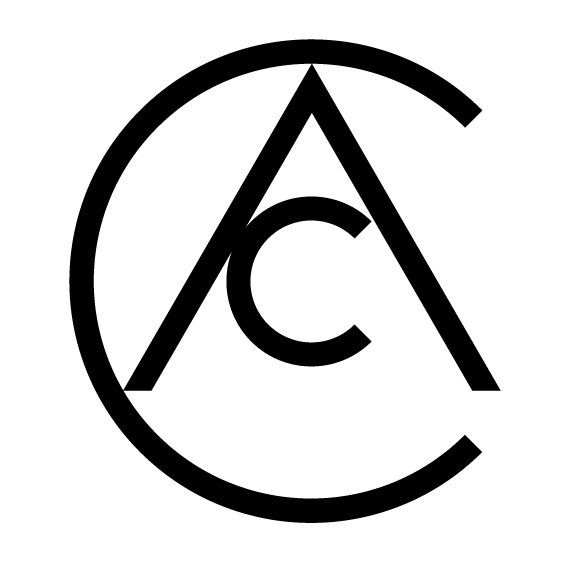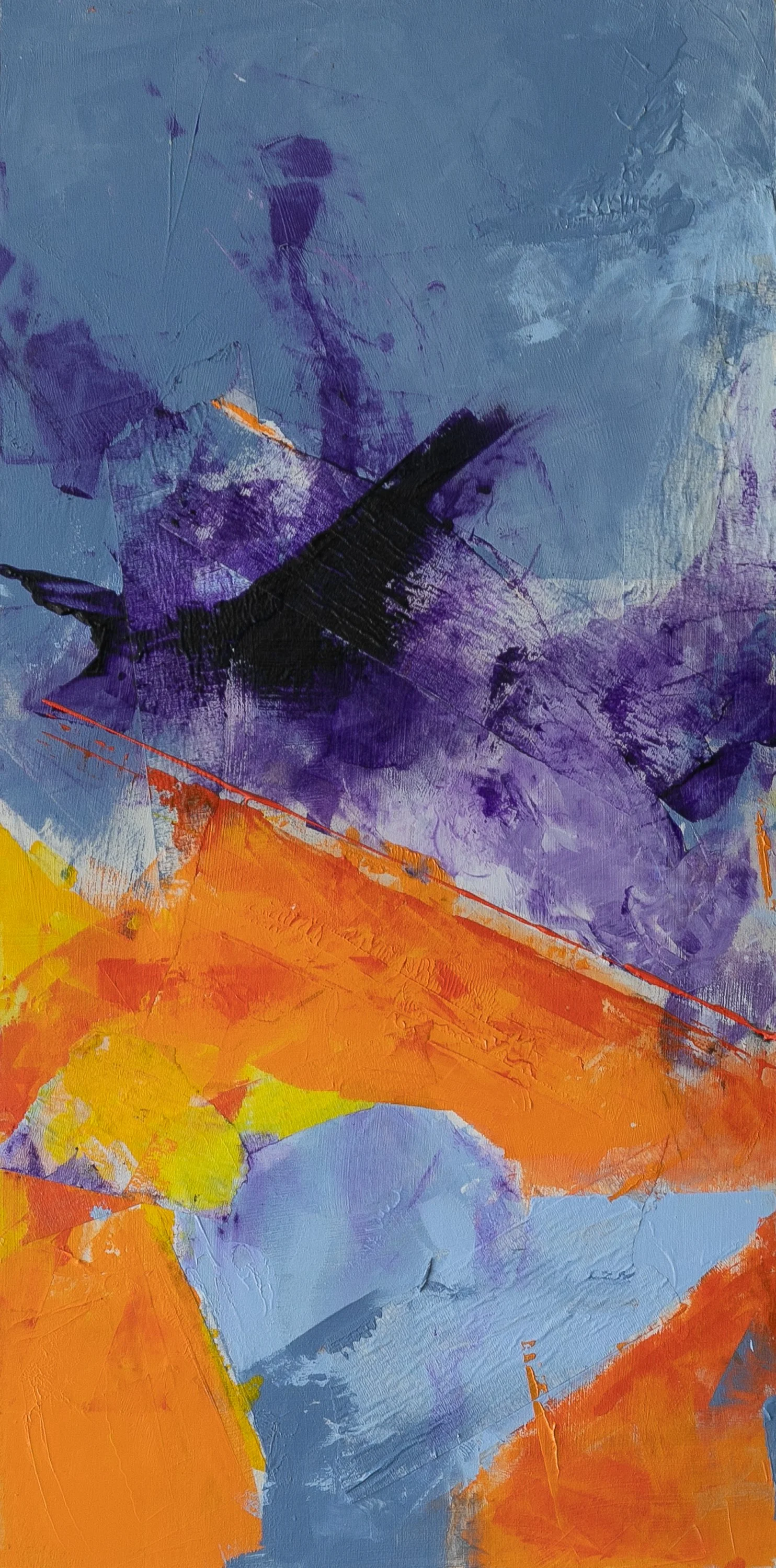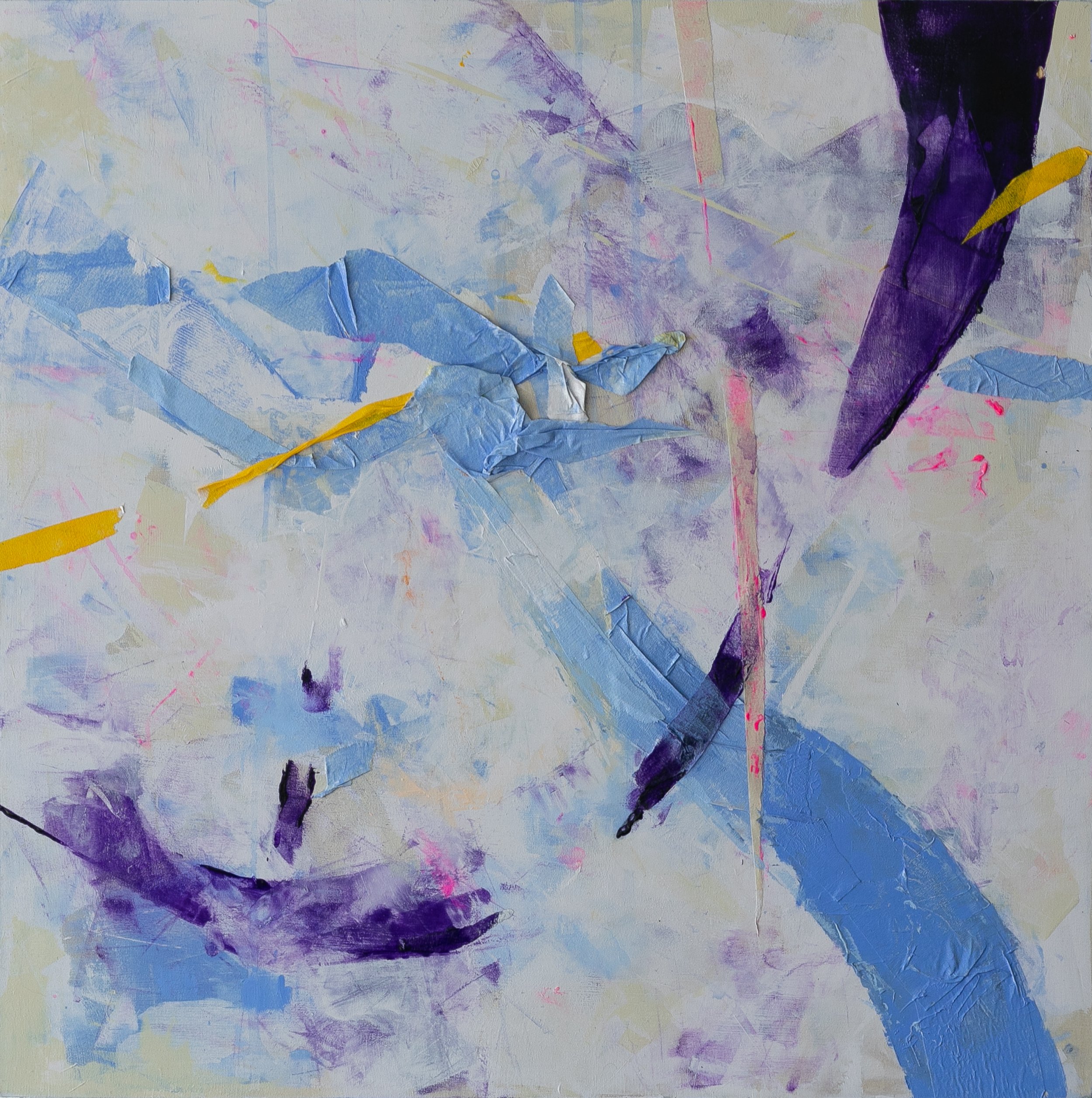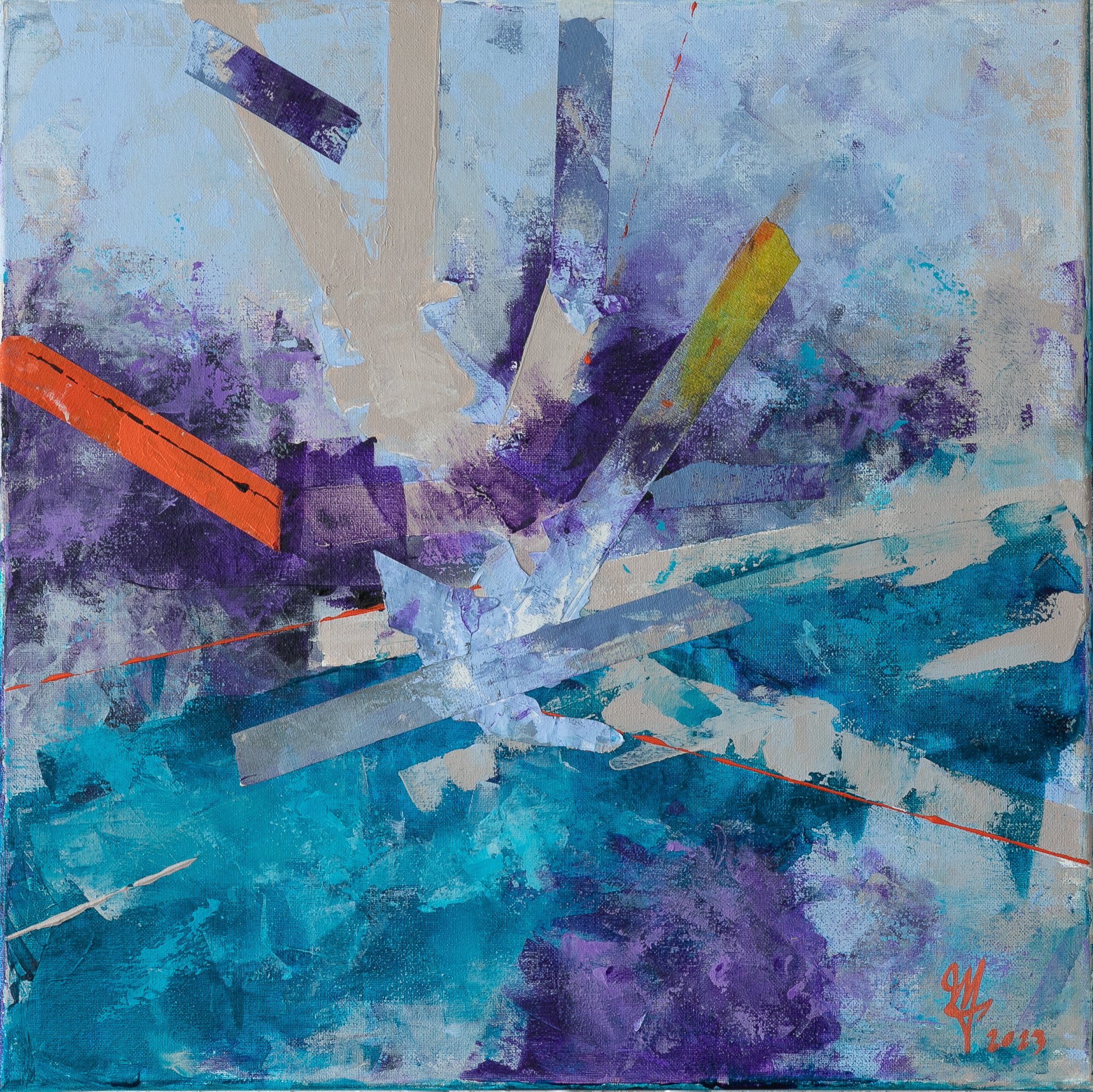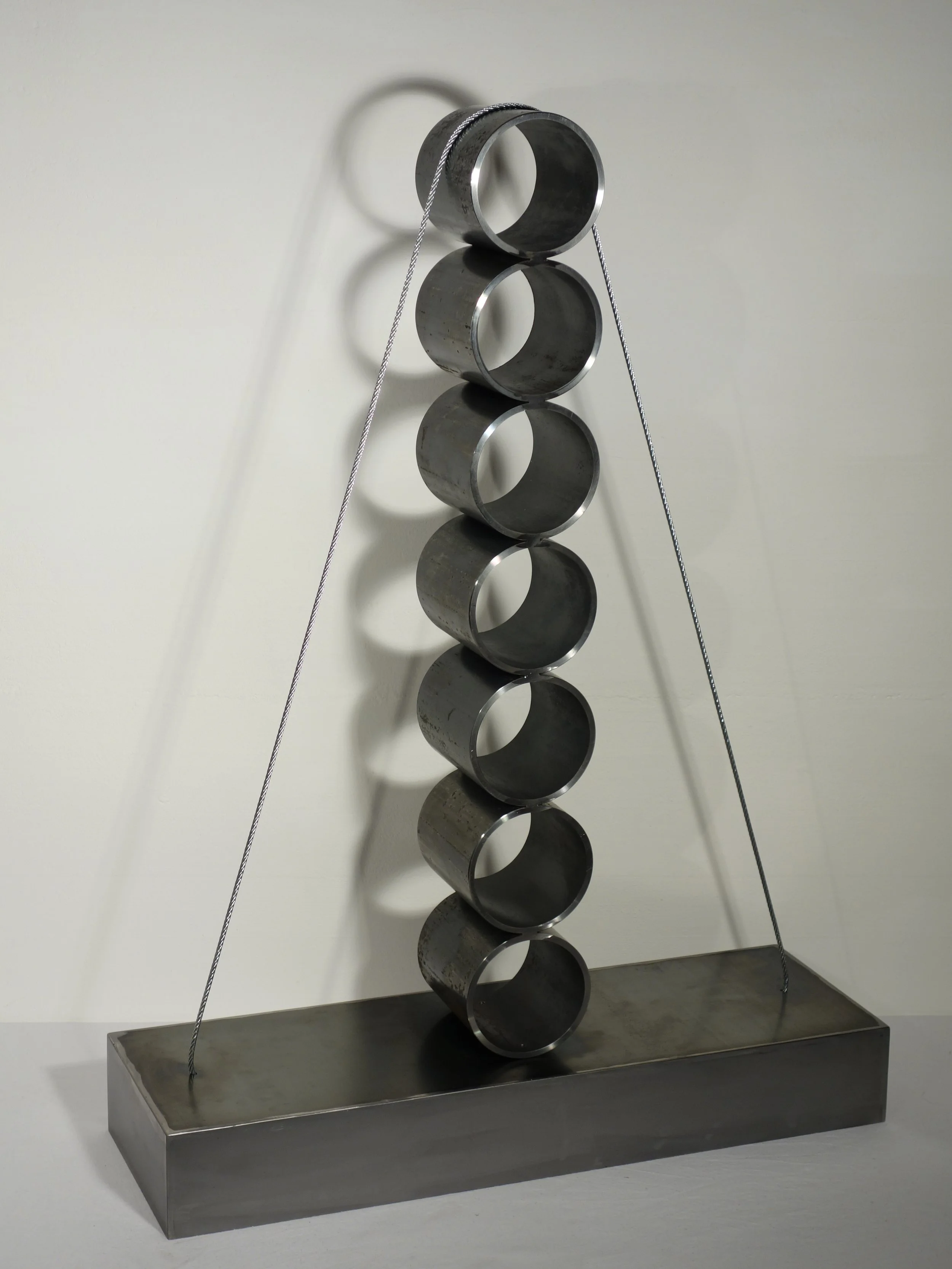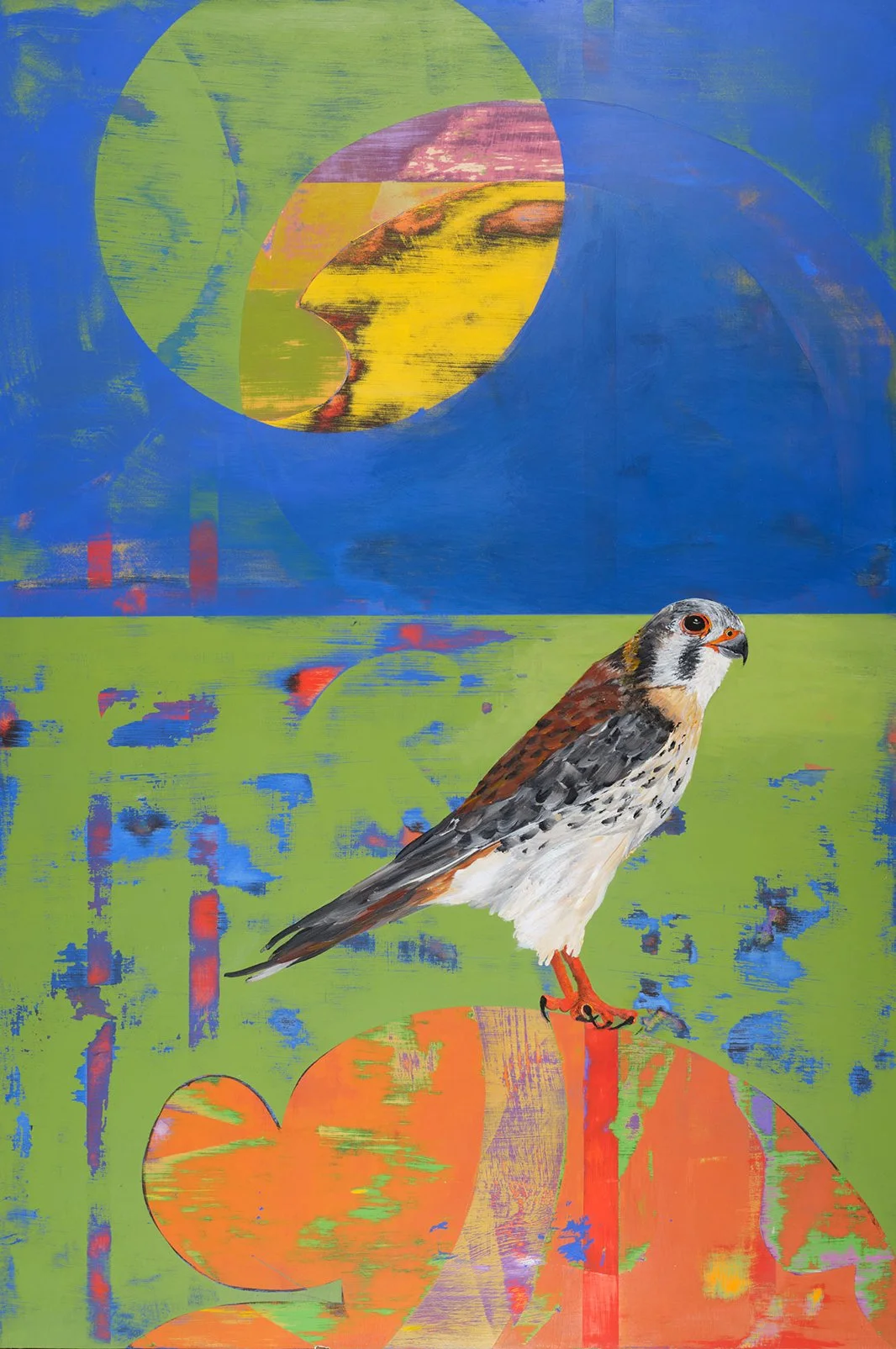Marcela Vargas
Marcela Vargas’ body of work is a testament to the dynamic interplay between memory, cultural identity, and environmental reflection. Her oeuvre reveals a profound engagement with the materiality of paint and the symbolic resonance of her compositions. Born in Medellín, Colombia, Vargas’ rich artistic journey spans continents, blending influences from her Colombian heritage with the sensibilities gleaned from her studies in Belgium, Portugal, and the United States. Her art exudes a cosmopolitan spirit, yet remains deeply rooted in the vibrant textures of her Latin American roots.
In the vein of great abstract artists such as Helen Frankenthaler and Antoni Tàpies, Vargas’ work negotiates the tension between form and formlessness, between the structured and the serendipitous. Yet Vargas forges her own distinct aesthetic—one that speaks to the contemporary moment while drawing on the timeless traditions of abstraction. Her paintings pulsate with energy, employing layers of texture and color to convey movement, emotion, and memory. Each work is a visual symphony where palette knife marks and collage elements form a dance of visual dynamism.
Central to Vargas’ work is her exploration of the cyclical nature of life, informed by her upbringing in Medellín—a city often referred to as the "City of Eternal Spring." This ethos of regeneration permeates her paintings, with colors that oscillate between the vivid vibrancy of springtime and the earthy depth of autumnal tones. In works like Through the Clouds, one can sense her fascination with the transient beauty of nature, as cool blues and purples evoke the ethereal interplay of light and mist. This piece, like much of her art, speaks to the impermanence of life and the continual rebirth inherent in natural cycles.
Her mixed media pieces, like Warning and Global Warming, serve as poignant commentaries on environmental concerns. The use of layered textures and collaged elements reflects the complexity of human impact on the natural world. These works evoke not only the physical scars on the landscape but also the resilience of nature’s ability to endure and adapt. Vargas’ deep respect for nature is not only evident in her subject matter but also in her process—her deliberate and tactile engagement with materials mirrors the organic processes she so eloquently depicts.
Vargas’ technique is rooted in the tactile qualities of her chosen medium. Wood panels serve as her preferred base, allowing her to build robust, textured layers through the application of acrylics, collaged papers, and even textiles. This preference for wood evokes an almost sculptural approach to painting, inviting the viewer to engage with her works not just visually but physically—to trace the ridges and furrows of her compositions with their gaze.
In works like Patches I and Patches II, Vargas demonstrates her mastery of color and form. These paintings are mosaics of fragmented shapes, each piece seemingly torn from a larger whole and then meticulously reassembled. The result is a visual tapestry that speaks to the artist’s personal history of travel and displacement. Each fragment represents a memory, a place, or an emotion, creating a narrative that is as fragmented and multifaceted as human experience itself. These works echo the collage techniques of Kurt Schwitters while bringing a distinctly Latin American sensibility to the practice.
Her use of bold, energetic brushstrokes and palette knife marks recalls the gestural abstraction of Willem de Kooning, yet Vargas’ approach is distinctly her own. Her strokes are purposeful yet spontaneous, creating compositions that feel alive with movement and vitality. The layering of translucent and opaque pigments creates a sense of depth and complexity, drawing the viewer into the work and inviting prolonged contemplation.
Vargas’ art is deeply imbued with symbolism, much of which draws on her Colombian heritage and her experiences as a nomadic artist. The vibrant oranges and yellows that recur in her palette, as seen in My Way, evoke the warmth and vitality of the Latin American landscape, while the cooler blues and grays of Santiago Compostela reflect the meditative serenity of her European sojourns. The juxtaposition of these palettes within single compositions mirrors the duality of her identity—both rooted and cosmopolitan, traditional and contemporary.
Her fascination with fashion and textiles further enriches her visual language. In works like Drops No Frame, one can discern echoes of fabric patterns and textures, as if the artist is weaving a canvas rather than painting one. This interplay between art and fashion speaks to Vargas’ broader interest in the intersections of cultural forms, where one medium informs and elevates another.
In the contemporary art scene, Vargas occupies a unique position as both a chronicler of personal and cultural memory and an innovator in abstract painting. Her works have been showcased in prestigious venues such as the MEAM in Barcelona and Galeria Azur Miami, affirming her status as a rising star in the global art world. Yet her art transcends the boundaries of geography and culture, resonating with a universal audience through its emotional depth and aesthetic rigor.
Vargas’ importance lies not only in her technical mastery and aesthetic innovation but also in her ability to speak to the pressing concerns of our time. In an era marked by environmental crisis and cultural displacement, her art offers a vision of hope and resilience. Her ability to weave together disparate influences—from the natural world to urban environments, from fashion to fine art—creates a body of work that is as intellectually engaging as it is visually stunning.
Marcela Vargas is a visionary artist whose work bridges the personal and the universal, the tactile and the ephemeral. Her art invites us to reflect on the beauty and fragility of the world around us, while also celebrating the resilience of the human spirit. In her hands, abstraction becomes a language of memory, identity, and transformation—a language that speaks to the heart as much as the mind. Her paintings are not just objects to be viewed but experiences to be felt, each one a journey into the depths of color, texture, and form.
As Rosalind E. Krauss once observed of abstract art, “The grid announces modern art's will to silence, its hostility to literature, to narrative, to discourse.” Yet Vargas’ work defies this notion, imbuing the grid and the abstract form with narrative and discourse, with memory and meaning. She is not just an abstract artist but a storyteller, a philosopher, and a visionary. Her art reminds us that, in the hands of a true master, abstraction is not an end in itself but a means of engaging with the deepest truths of human existence.
Vargas’ place in the contemporary art market is both dynamic and promising. As collectors and galleries increasingly seek works that reflect a blend of aesthetic sophistication and cultural resonance, Vargas’ art stands out as a compelling offering.
Her participation in significant exhibitions, such as the Women in Art Biennale and showcases at SolidArt Brussels, situates her among the most exciting voices in today’s art scene. Her pieces have found homes in private collections across Europe and the Americas, a testament to their universal appeal and enduring relevance. This growing demand highlights the importance of her contribution to the dialogue of contemporary abstraction.
In Vargas’ art, there is a profound understanding of the interplay between cultural specificity and global themes. Her works resonate with audiences from diverse backgrounds, drawing them into a shared exploration of memory, identity, and nature. As the art market continues to evolve, prioritizing works that combine technical brilliance with conceptual depth, Vargas’ position is poised to ascend even further.
Her art reminds us that, in the hands of a true master, abstraction is not an end in itself but a means of engaging with the deepest truths of human existence. Through her innovative use of materials and her ability to infuse her works with both personal and universal significance, Marcela Vargas cements her place not only in the realm of contemporary abstract art but also in the broader cultural discourse of our time.
In the dynamic and ever-shifting realm of contemporary art, Marcela Vargas emerges as a luminary of boundless creativity and profound vision, her oeuvre embodying the timeless capacity of art to transform, inspire, and transcend boundaries.
By Marta Puig
Editor Contemporary Art Curator Magazine
Global warming, 2023. Acrylic on Wood, 50 x 50 cm
Birds, 2023. Acrylic and mixed media on wood, 51 cm x 51 cm
Drops, 2022. Acrylic on wood. 100 cm x 100 cm
My way, 2024. Mixed media on wood. 50 cm x 50 cm
Through the clouds, 2023. Mixed media on canvas. 51 cm x 51 cm
Warning 2023. Mixed media on wood. 60 x 60 cm.
“Homenaje” ( Homage), 2024. Mixed media on wood, 60 x 60 cm
The way to Santiago de Compostela, 2022. Acrylic on wood. 60 x 60 cm
Patches I, 2023. Acrylic on wood 50.5 cm x 25.3 cm
Patches II, 2023. Acrylic on wood 50.5 cm x 25.3 cm
